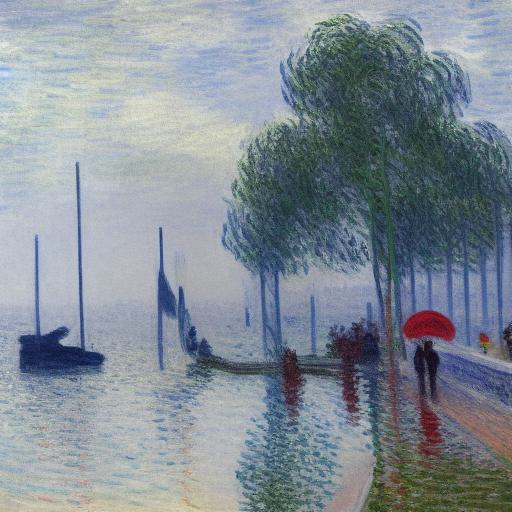How to write this prompt?
Here’s a breakdown of the various components of the prompt and how they contribute to the final image:
- “A mystical small house in the autumn woods”: This sets the scene for the image and provides a general idea of what the subject of the image should be.
- “Vintage vibe”: This indicates that the image should have a nostalgic or old-fashioned feel to it.
- “Watercolor painting”: This suggests a particular style of art that the AI should aim to emulate.
- “A storybook illustration by Xia Gui“: This provides a specific reference point for the art style, giving the AI a more concrete idea of what the image should look like.
- “Grainy texture”: This indicates that the image should have a rough or textured appearance.
- “Gradient”: This suggests that the image should have a gradual transition between different colors.
- “Hand drawing”: This indicates that the image should look like it was drawn by hand, rather than being a computer-generated graphic.
- “Naive art”: This indicates that the image should have a simplistic or childlike quality to it.
- “Cottagecore“: This is a particular aesthetic that involves romanticizing rural life and domesticity, so this part of the prompt sets the overall tone for the image.
- “Little cottage”: This is a more specific detail about the subject of the image, indicating that it should depict a small dwelling.
Taken together, these various elements provide a rich and detailed prompt that gives the AI a clear idea of what the final image should look like. Each individual part influences the image in different ways, from setting the scene to dictating the art style to specifying details about the subject matter. By carefully crafting each component of the prompt, you can guide the AI to generate an image that meets your desired specifications.
What is cottagecore?
Cottagecore is a romanticized aesthetic that celebrates rural life and domesticity. It often involves an emphasis on simplicity, natural beauty, and traditional crafts like baking, gardening, and knitting. The style often features elements like floral patterns, vintage fabrics, and rustic decor.
How to create a watercolor painting effect in an AI-generated image?
To create a watercolor painting effect in an AI-generated image, you can use a combination of brush effects, layer blending modes, and texture overlays. Start by using a brush tool that mimics the look of watercolor paint, such as one with a soft edge and low opacity. Then, experiment with different blending modes to create a subtle, transparent effect. Finally, overlay a texture layer on top of the image to give it a grainy, watercolor-like texture.
Why is Xia Gui considered an influential artist in Chinese history?
Xia Gui is considered an influential artist in Chinese history because of his innovative use of space and composition in landscape painting. His style was characterized by a focus on negative space, using sparse brushstrokes to convey a sense of depth and atmosphere. His work was highly influential on subsequent generations of artists, and he is considered one of the masters of the Southern Song dynasty (1127-1279 CE).
Can AI art generation prompts be used for educational purposes?
Yes, AI art generation prompts can be used for educational purposes. By providing students with prompts, they can learn about different styles and techniques of art, as well as experiment with new forms of creativity. For example, teachers can use AI art generation prompts to teach students about different art movements, such as impressionism or cubism, and then have them create their own interpretations using AI tools. Additionally, AI-generated art can be used in classrooms to teach about the intersection of art and technology, and how technology is changing the way we create and experience art.
How can AI-generated art be used to inspire or inform other forms of creative expression?
AI-generated art can be used to inspire and inform other forms of creative expression in several ways. First, it can provide new perspectives and insights into traditional art forms. By using AI to generate variations of classic artworks, artists can explore new interpretations and ways of seeing. Second, AI-generated art can be used as a starting point for other creative projects. For example, an artist could use an AI-generated image as a reference point for a larger painting or sculpture. Third, AI-generated art can be used as a tool for collaboration, allowing artists to work together to create new pieces that combine traditional and AI-generated elements. Finally, AI-generated art can be used to push the boundaries of what is possible in art, by exploring new forms and techniques that were previously impossible or unimagined.
With the aid of design tools such as Visual Paradigm Online, incorporating AI-generated art into your designs has never been easier. Visual Paradigm Online provides a user-friendly interface and a variety of design templates and assets, enabling you to experiment with various styles and layouts until you find the perfect match for your project. In just a few clicks, you can produce stunning and visually appealing graphics that will captivate your audience.


